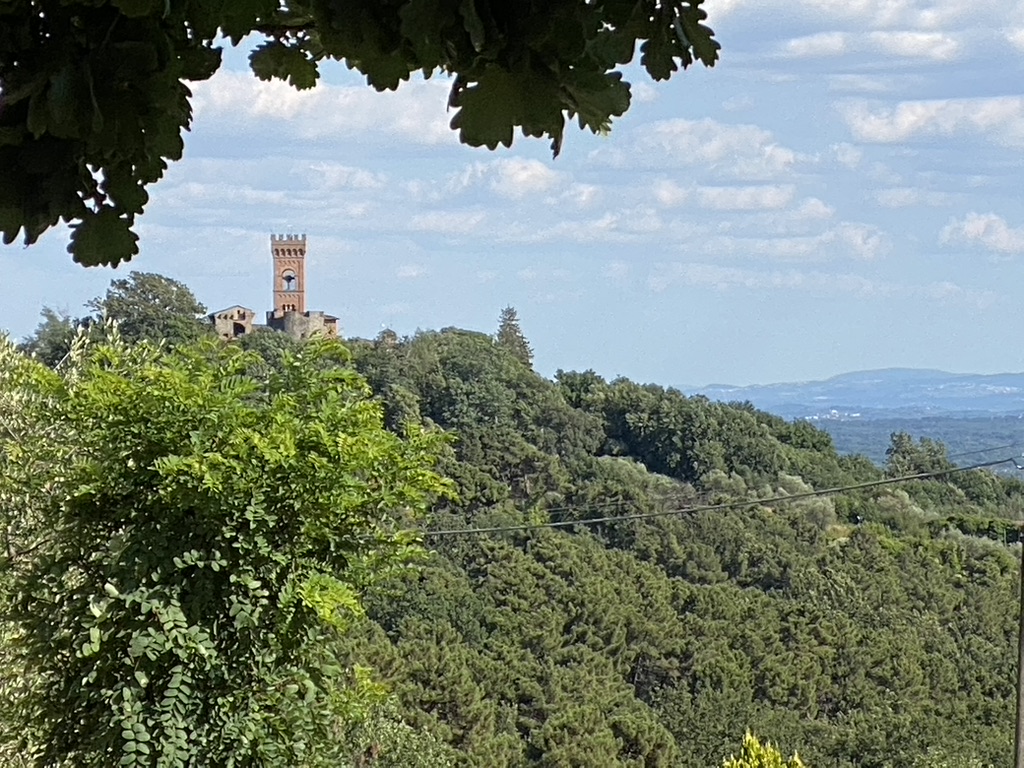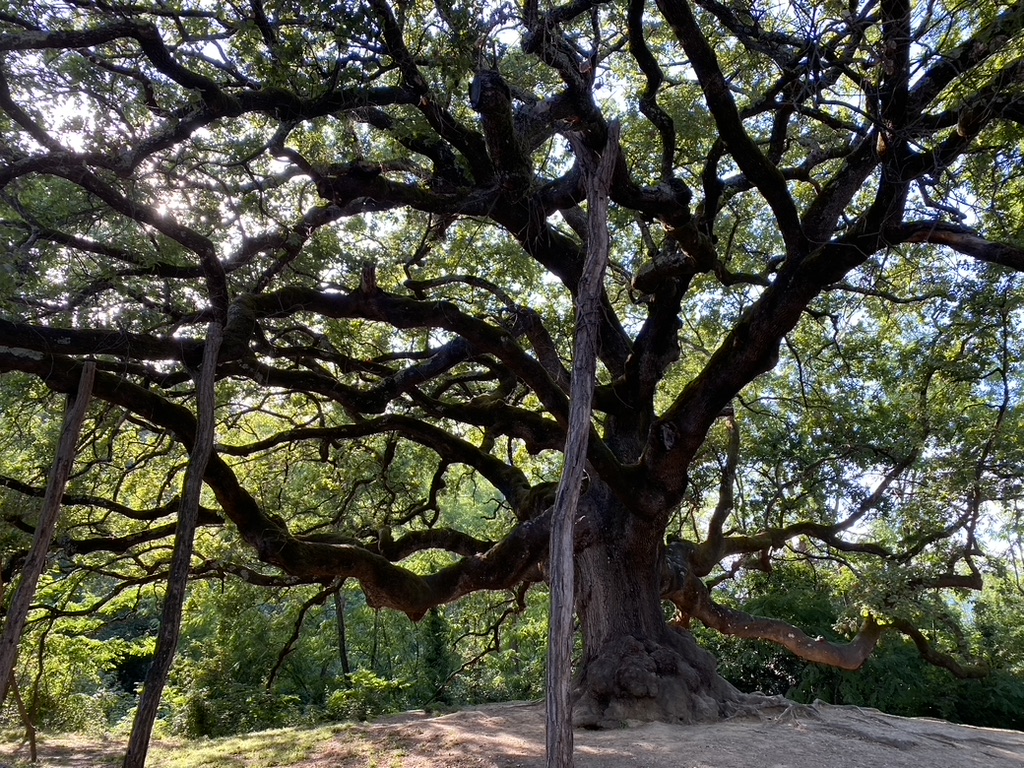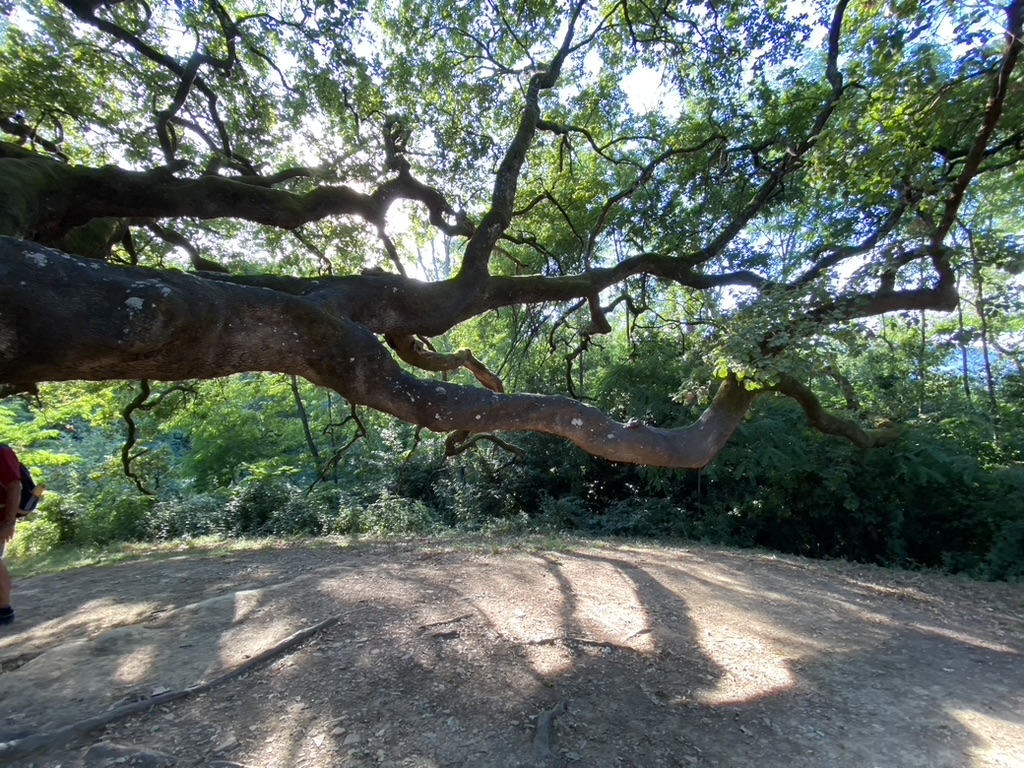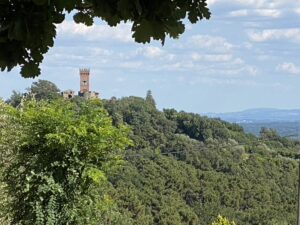
Montecarlo reveals insider secrets
There is much more to Montecarlo – a lovely medieval enclave just east of Lucca – than just its fine wineries and restaurants. On a three hour hike with with our guide from the tour company Emozionambiente, we discovered that in 1333 the small fort there was named for Charles (Carlo) of Bohemia, who had helped it defeat the Florentine troops attacking Lucca’s walls. Montecarlo sits at 163 mt. above sea level and dominates the Val di Nievole on one side and the plain of Lucca on the other. From here one can enjoy beautiful views of hills rich in vineyards and olive groves, and on a clear day even catch glimpses of the Apuan Alps.
These are the views that our very knowledgeable guide Bartolomeo Puccetti, shared with us as we meandered up and down a gentle path through vineyards, dense forests of oaks, linden trees and evergreens, to the tiny hamlet of San Martino in Colle, a place consisting only of a 12th century church, a free-flowing water fountain, and no more than three homes.
It is known because famed Lucchese leader and military strategist, Castruccio Castracani degli Antelminelli, constructed a fortress here overlooking the Val di Nievole in the early 14th century to help defend the Republic of Lucca from invasion. A Ghibelline, Gonfalonier Castracani was opposed to papal rule and sided with the Holy Roman Emperor. This position left him in the minority against Lucca’s greatest enemies, Firenze and Pisa, which were controlled by Guelphs, allies of the pope, but he scored many victories against them nonetheless. He called the fortress “La Ghibellina” as a tribute to his troops. The fortress was destroyed later to make room for housing, but its adjacent 11th century church still remains.

From here we visited a hard to locate tree that is designated a national treasure. Known as the Witches’ Tree thanks to the girth and configuration of its numerous branches, the oak is over 600 years old and a special sight worth seeking out. Legend has it that witches used the tree to sit down, relax and chat together, when they weren’t dancing on top of it!

In fact the tree, a Quercus pubescens, has surreal dimensions: it has an unusually flat crown of more than 40 meters (131 feet) in diameter, is 24 metri (78.74 feet) tall and has a trunk circumference of 4,5 metri (14.76 feet).
More recently, scholars believe that the tree inspired the author of Pinocchio, Carlo Collodi, to create the scene in the story in which a nefarious fox and cat rob the puppet after stringing him up on a massive tree. This, tho, was only one of the marionette’s misadventures, so we highly recommend visiting Pinocchio Park in nearby Collodi where kids and adults can experience how the puppet became a little boy in an amusing and creative ways.
Our hike ended with a wine and olive oil tasting at the lovely Azienda Carmignani just outside Montecarlo. Since 1386, the Carmignani family has produced refreshing red, rosé and white DOC wines and olive oil from its own groves. Today it can make for a relaxing end to an enlightening day whether one stays overnight at their agriturismo or simply enjoys their organic products.
Emozionambiente offers hikes of varying length and intensity that help one to discover not only the natural beauty of the Province of Lucca, but also its history and culture.

